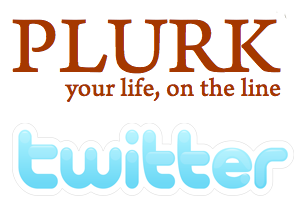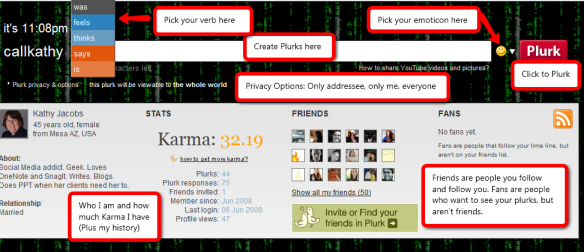 I conducted a survey among my friends and fellow peers on Facebook and the results were rather surprising. 80% of them don’t have either a Twitter or Plurk account, 12% use Plurk, 4% have signed up for a Twitter account, and 4% use all three Web 2.0 websites. From the information I’ve gathered, looks like teens prefer interactive social networking platforms like Facebook whereby they can upload photos, videos and communicate with one another in “private mode”. The sign-up rate of micro-blogging platforms such as Twitter and Plurk is still relatively low among teens, although the numbers are heading north steadily. But when it comes to micro-blogging platforms, Plurk seems to be more attractive among teens than rival Twitter. Why?
I conducted a survey among my friends and fellow peers on Facebook and the results were rather surprising. 80% of them don’t have either a Twitter or Plurk account, 12% use Plurk, 4% have signed up for a Twitter account, and 4% use all three Web 2.0 websites. From the information I’ve gathered, looks like teens prefer interactive social networking platforms like Facebook whereby they can upload photos, videos and communicate with one another in “private mode”. The sign-up rate of micro-blogging platforms such as Twitter and Plurk is still relatively low among teens, although the numbers are heading north steadily. But when it comes to micro-blogging platforms, Plurk seems to be more attractive among teens than rival Twitter. Why?
Plurk = Personal, Twitter = Personal + Business
Plurk is only great for personal uses, and this is what most teens desire. They love to share their personal thoughts and opinions with their friends. Although Twitter is a similar community and offers the same features, but the San Francisco-based company is gradually emerging from a “What are you doing?” platform to an epi-center of world events. It’s kind of a news and communications amalgamator whereby every user on the Twitterverse becomes a journalist, breaking news in real-time which claims to be much faster and probably even more accurate than the traditional media. Twitter is also business-oriented. Many companies, bloggers and Internet marketers make use of the platform to promote their products or blog articles, in an effort to reach out to a larger audience.
However, what most teens are concerned about are their friends and exciting features micro-blogging services offer, and not the latest political updates about the Iran election or breaking news from Google regarding its newly-launched Google Wave.
Compare the two slogans of Twitter and Plurk:

One is a website which lets you “Share and discover what’s happening right now, anywhere in the world” whereas the other is a ‘genuine’ micro-blogging platform – “Plurk is a social journal for your life. Share your life easily with friends, family and fans.”
In terms of features, Plurk has managed to attract a much younger demographic. Rather than in a vertical list, updates (plurks) appear on a horizontal timeline. This impressive and outstanding feature enables users to know exactly when something was posted because of the dates and times listed on the page. You can just keep reading and reading all the way back to the beginning of their Plurk time.
Besides its beautiful timeline filled with personal updates, its Karma system stands out too. Although many Plurk users (adults) find the Karma system useless, but teens seem to love it. This feature may have spurred teens on to plurk frequently. The Karma system gives users incentives to maintain regular updates. Every time you do something on Plurk you gain Karma. Posting, responding and adding friends are examples of things that will add you Karma. Karma can be lost too, usually by not posting for awhile.
Others features smileys, threaded conversations, mouseover posts, and says, feels, wishes. I personally feel that Plurk seems to demonstrate they were aiming the product at teens. The colors, interface, Karma system and interactive features verify this suspicion for me.
On the other hand, the main focus of Twitter is simplicity. No threaded conversations, no beautiful timeline, no smileys, no incentives, and no badges. It’s merely a micro-blogging platform without any much eye-catching features worth commenting about.
Overall, what I’ve mentioned above are the main reasons why teens prefer Plurk to Twitter. What do you think? Leave your comments below…
Read more: 5 Reasons Why Many Teens Don’t Use Twitter
